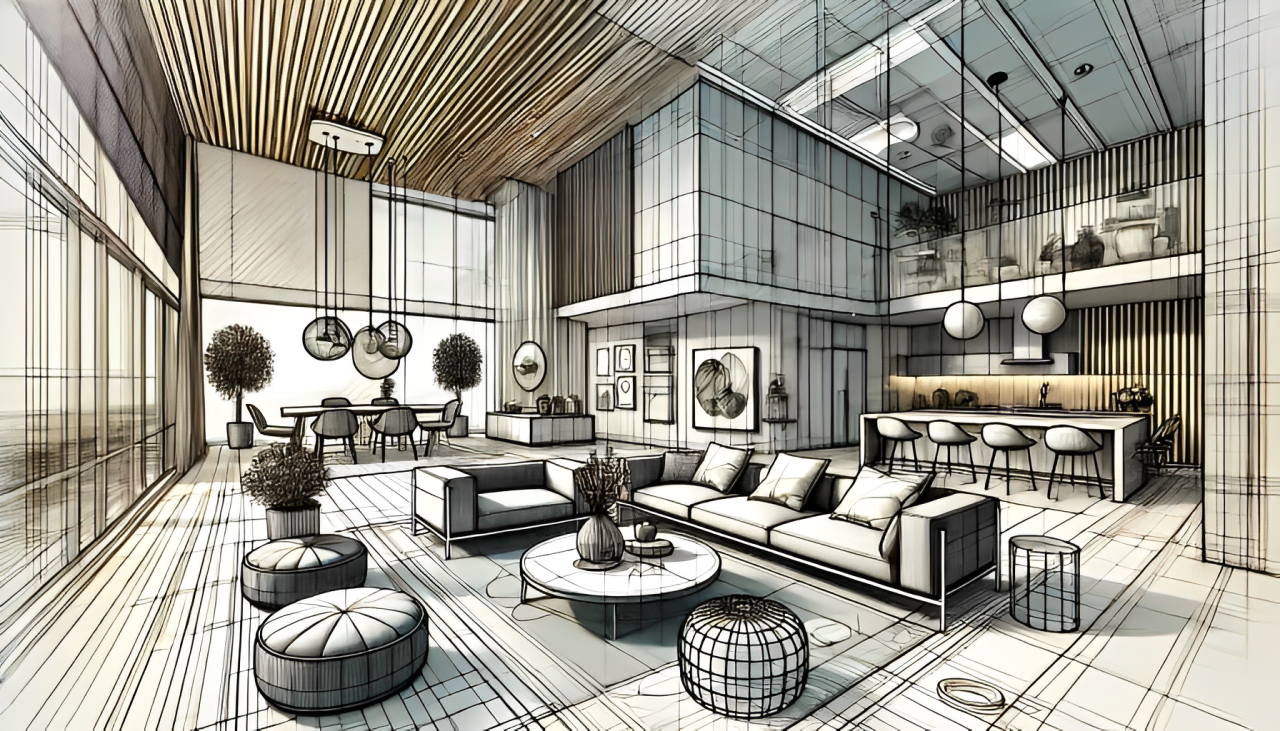
Architecture is often viewed through the lens of aesthetics and structural integrity. However, its true essence encompasses much more than just the bricks and mortar of a building. Architecture is a vital discipline that interacts with the societal, cultural, and environmental constructs that govern our lives. It serves as a reflection of our values, shaping not only our physical surroundings but also our emotional landscapes.
The Intersection of Art and Science
ARCHITECTURE IS NOT A SCIENCE PLUS ART, BUT A SCIENCE INTERPENETRATED IN ALL ITS METHODS AND APPLICATIONS BY THE TRUE SPIRIT OF ART.
_JOHN BELCHER (ARCHITECT)
At its core, architecture thrives at the intersection of art and science, blending creativity with technical precision. On one hand, the art of architecture is reflected in its visual appeal—how forms, materials, and textures come together to evoke emotions and create memorable spaces. On the other hand, the science of architecture ensures that these designs are structurally sound, functional, and sustainable, grounded in engineering principles and technological advancements.
The true challenge and beauty of architecture lie in marrying these two disciplines. A well-designed building balances aesthetics and practicality, creating spaces that are both captivating and purposeful. It’s not enough for a structure to be visually striking—it must also serve the needs of its users, providing comfort, safety, and efficiency. This duality makes architecture unique, as it must consistently deliver on both fronts.
Through this blend of art and science, architecture becomes a medium for storytelling. Buildings are not just static forms but vessels of experiences and memories, reflecting their purpose and the people who inhabit them. Whether designing a home, a school, or an airport, architects have the power to craft spaces that inspire and connect individuals to their surroundings in meaningful ways.
Aesthetic Appeal: The Soul of Architecture

The visual impact of architecture cannot be understated. Aesthetic appeal is one of the most compelling aspects of architectural design. Iconic structures, like the Taj Mahal in India or the Golden Gate Bridge in San Francisco, capture the imagination and inspire travellers from around the world. Such buildings become symbols of cultural pride and human ingenuity, often serving as matchmaking sites for art and engineering.
When architects create spaces that are visually appealing, they not only fulfill clients’ aspirations but also contribute to a sense of identity within a community. A well-thought-out design can uplift public spaces, making them inviting for social interactions and fostering connections among residents.
Functionality: Meeting Diverse Human Needs

Functionality is where an architect’s training and expertise truly shine. Each building must cater to the specific needs of its users, be it a residence, office, or public facility. A functional layout improves efficiency, promotes usability, and enhances the overall experience of the occupants.
For example, the design of a workplace can impact employee productivity and well-being. Features like open spaces, natural light, and quiet areas for focused work can transform a drab office environment into a hive of creativity and collaboration. Architects must consider factors such as airflow, acoustics, and ergonomics to create spaces that accommodate diverse activities and user requirements.
Sustainability: The Modern Imperative

© eternoivica.com
Inspiration in architecture today is incomplete without a consideration of sustainability. As environmental issues take centre stage, sustainability has become a key consideration in architectural design. The built environment contributes significantly to carbon emissions and resource depletion; therefore, sustainable architecture offers innovative solutions that address these challenges. As architects grapple with the realities of climate change and resource depletion, creating eco-conscious designs is not just a necessity but an opportunity to inspire. The challenge lies in designing structures that are both aesthetically pleasing and energy-efficient while minimizing environmental impact.
Green buildings incorporate energy-efficient systems, sustainable materials, and waste-reduction strategies into their designs. For example, structures like the Bosco Verticale in Milan feature vertical gardens that not only beautify the building but also improve air quality and biodiversity. Architects today are challenged to envision projects that not only stand the test of time but also coexist harmoniously with nature. Bosco Verticale is not only addressing air quality concerns but also introducing greenery into the urban fabric, creating a living, breathing structure that inspires both residents and passers-by.
Cultural and Historical Significance: Building Legacies

Every piece of architecture holds within it the narratives of cultural heritage and community values. Landmarks like the Colosseum in Rome or the pyramids of Giza serve as reminders of human achievement and artistry. They connect us to our past, evoking nostalgia and shaping our futures.
Architects have the responsibility to honour these cultural legacies while also embracing modern innovations. By integrating local history and traditions into new designs, architects can foster a sense of belonging and continuity in communities. Spaces that respect and reflect their context are more likely to be embraced by those who inhabit them.
Written by:
Arc. Biola Akinola, mnia
Dorted community member
Discover more from dorted
Subscribe to get the latest posts sent to your email.







